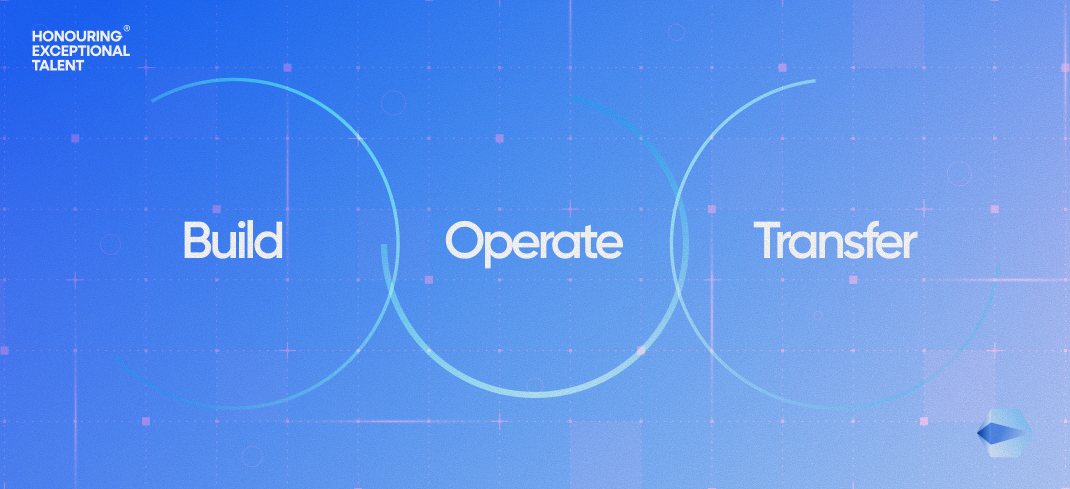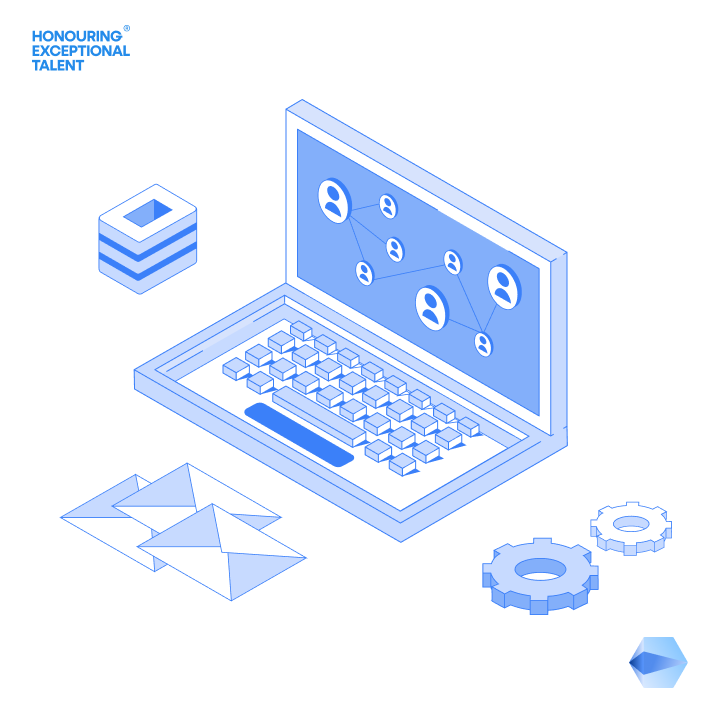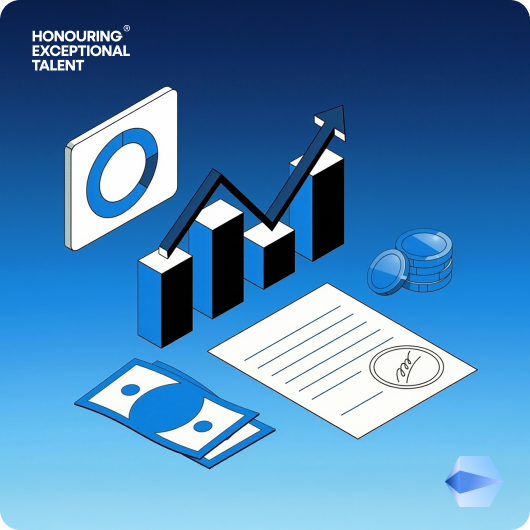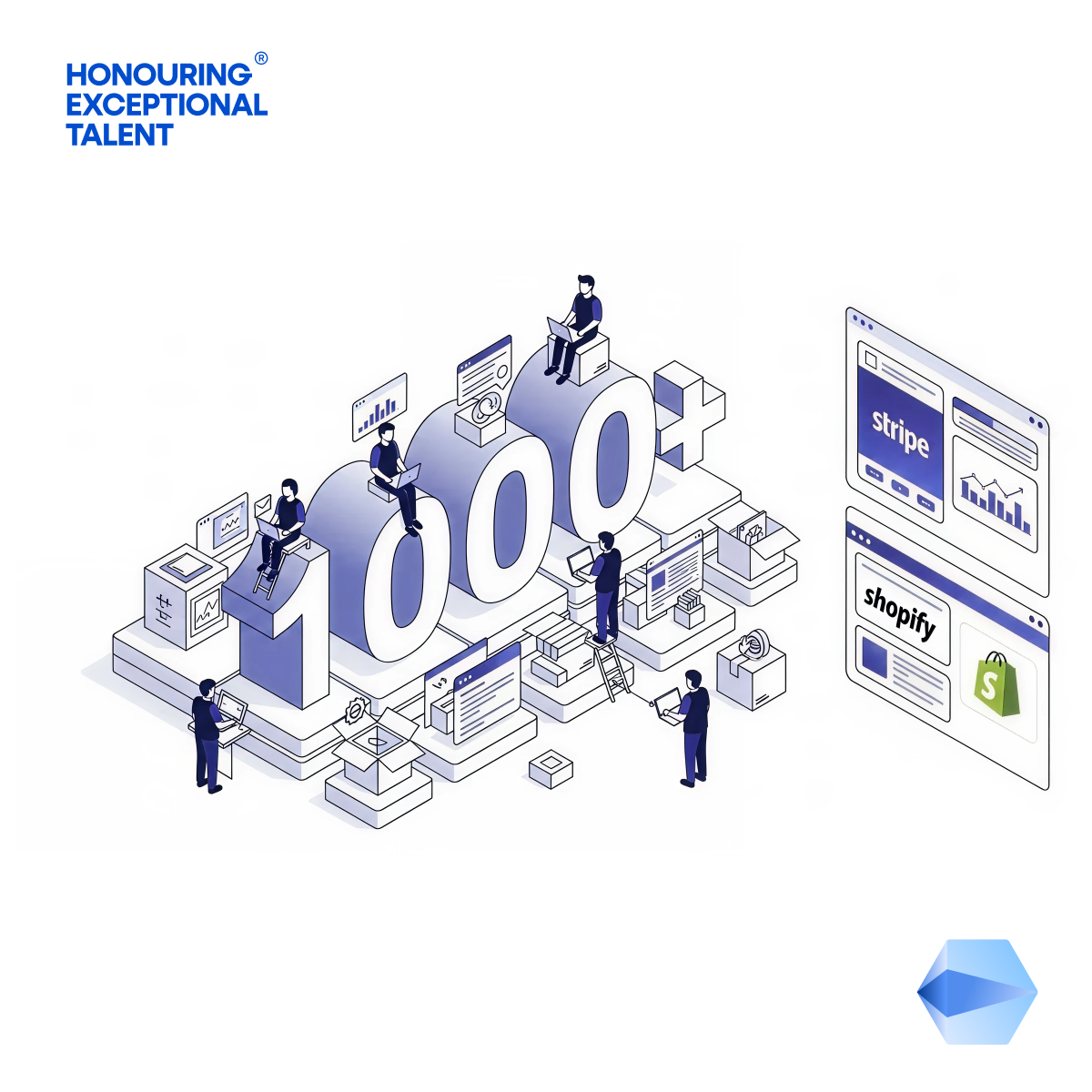The Build-Operate-Transfer Model Evolves: How AI and Hybrid Approaches Are Redefining Global Talent Acquisition
From fintech to SaaS, the BOT model is becoming the go-to playbook for global expansion. Here’s how AI and hybrid approaches are making it faster, smarter, and lower risk than ever.

“In 2025, 50% of global companies are already using BOT or BOTT models for their global in-house centers, with over 70% seriously considering it.”
—Dmytro Ovcharenko (CEO, Alcor BPO) [2]
Introduction: BOT Takes Center Stage in Global Talent Strategy
The global search for elite engineering and product talent is more competitive - and more urgent - than ever. For technology leaders seeking access to untapped markets, the Build-Operate-Transfer (BOT) model is no longer a niche tool. It has become a cornerstone strategy in digital transformation and international expansion.
Recent industry surveys reveal a seismic shift: up to 50% of global companies have adopted BOT or hybrid BOTT models for their in-house tech centers, with 70% considering similar moves by year’s end. [2] Unprecedented advances in automation, AI, and workflow customization are accelerating this trend, promising not just rapid access to talent but genuine competitive advantage for those who act decisively.
How are modern BOT models transforming tech operations? More importantly, what should engineering leaders, CTOs, and fast-scaling startups know to leverage these models for optimal results? In this Carbon Cut deep dive, we analyze the latest trends, technology integrations, and operational strategies to help you harness BOT for the next wave of global growth.

1. BOT in 2025: A Strategic Engine for Global Advancement
What Is BOT - And Why Is It Thriving?
At its core, the Build-Operate-Transfer framework enables companies to:
- Build: Partner with a specialist (such as Carbon) to recruit and assemble a high-performing engineering or product team in a targeted global market.
- Operate: Leverage operational support, local HR, infrastructure, and governance while focusing on seamless delivery and output.
- Transfer: Take full ownership of the established team, processes, and assets after achieving operational maturity.
This structured, staged approach dramatically lowers risk versus direct acquisition or traditional outsourcing. It offers flexibility, robust IP control, and true cultural alignment with Western tech standards - factors critical for rapid advancement in unfamiliar markets.
BOT’s resurgence is tightly connected to two macro forces:
- The relentless pace of technological change (AI, automation, advanced analytics)
- The need for flexible, low-risk entry into emerging talent markets such as Latin America and Eastern Europe
Key Data Point:
Companies using BOT/BOTT models report 40% lower costs compared to traditional IT outsourcing and scale technical teams from 10 to 100+ engineers in under 12 months. [2]
2. Technology-Driven BOT: Automating Scale, Enhancing Intelligence
AI and Automation Enter the Mainstream
Traditional outsourcing focused on labor arbitrage and cost savings. Modern BOT prioritizes performance, resilience, and intelligent operations:
- AI-Powered Project Management: Machine learning tools are now driving key decisions - forecasting team workloads, identifying delivery risks, and optimizing resource allocation.
- In a leading Latin American project, ML-based management increased productivity by 20% without additional headcount. [1]
- Workflow Automation: From compliance tracking to incident response, automation is systematically reducing errors and accelerating timelines in the “Operate” phase.
- Predictive Analytics: Teams use real-time analytics to optimize sprint planning and product releases, pulling ahead of competitors still reliant on legacy systems.
“Automation and AI-powered technologies are redefining the operate stage, making BOT models essential for future-ready operations.”
—BOT Latin America analysts [1]
What Does This Mean for Engineering Leaders?
- Reduced manual overhead permits more focus on architecture and strategic product development.
- Operational bottlenecks are flagged (and resolved) earlier, reducing downtime and SLA penalties.
- Teams transition from operational dependency to independent, data-driven decision-making by the time the “Transfer” phase arrives.
3. Phased, Low-Risk Market Entry: Outpacing Direct Acquisitions
Minimizing Exposure, Maximizing Learning
For companies entering unfamiliar or high-volatility markets, the risk profile of direct hiring, greenfield investment, or acquisition can be daunting. BOT acts as a phased, data-informed wedge:
- Lower Upfront Commitment: Companies commit incrementally, with clear exits or pivots if market conditions change.
- Local Compliance and Employer-of-Record Handling: Trusted BOT partners navigate employment law, tax, and payroll complexities.
- Embedded Knowledge Transfer: Teams gain first-hand exposure to local nuances and technical ecosystems, avoiding the agency “black box” seen in many outsourcing relationships.
Alternative models, such as BOTT (Build-Operate-Transform-Transfer), go further by embedding transformation protocols - ensuring that teams don’t just mimic HQ processes, but adapt to next-generation technology strategies as markets evolve. [5]

4. Hybrid and Tailored Models: Moving Beyond One-Size-Fits-All
The Rise of BOTT and Custom BOT Agreements
BOT adoption is accelerating, but so is its sophistication. Deloitte’s recent analysis[5] emphasizes that customization is now standard, not exceptional:
- BOTT Model: Adds a “Transform” phase, where operational teams are upskilled or retooled to embrace cloud, DevOps, or data science mandates before full transfer.
- Location-Specific Adaptations: Agreements are tailored to account for regional regulatory environments (GDPR in Eastern Europe vs. data export rules in LATAM), as well as nuanced talent availability.
- Industry-Aligned Schedules: For fintech, regulatory ramp-up precedes full transfer; in e-commerce, hybrid delivery models allow faster market launches.
Customizing BOT frameworks upfront maximizes outcomes: teams become high-trust, high-autonomy contributors aligned to your business, not just transient delivery arms.
“The BOTT model optimizes operations upfront and builds teams aligned with new technology strategies, driving better outcomes.”
—Deloitte US [5]
5. Operational Impact: Measurable Gains
The Highest Value: Efficiency, Speed, and Cost Control
The operational upside for organizations embracing modern BOT models is substantial:
- 15–20% annual improvements in operational efficiency, as reported in IT deployments across North America and Europe. [4]
- 40% lower total cost versus traditional outsourcing, with headcount scalability and retention rates far above sector averages. [2]
- Ability to scale product engineering teams from 10 to 100+ talent in under a year - crucial for startups moving fast or enterprises entering new regions. [2]
Case Example:
A healthcare SaaS company leveraged BOT in Eastern Europe to ramp an R&D center from 12 to 85 engineers within 14 months, achieving a 17% improvement in on-time releases and a 22% reduction in operational spend (compared to projected costs in North America). [2][4]
Note: While public case studies are still emerging, industry trend data compiled across multiple sectors substantiates these gains.
6. Remaining Challenges: Where the Data (Still) Falls Short
Despite broad adoption, transparency gaps remain:
- Limited public post-transfer success stories hinder long-term ROI comparisons versus other expansion models.
- Regional benchmarking is scarce, complicating decision-making for leadership teams weighing LATAM, Eastern Europe, or APAC as next destinations.[2][3]
- Success metrics tend to focus on build/operate outputs, rather than post-transfer maturity or cultural integration.
For decision-makers, this underscores the importance of demanding clear reporting, pre-agreed KPIs, and real-time visibility - from the outset through to (and beyond) transfer.
7. Carbon’s Perspective: Making the Most of the Modern BOT
As a catalyst for Western companies tapping into the world’s most promising engineering and product talent beyond established hubs, Carbon sees the following as critical success levers:
- Strategic Market Targeting: Use data-driven insights to pinpoint underutilized regions (e.g., LATAM, Eastern Europe) that align with your tech stack and values.
- Technology Integration: Insist on AI- and automation-powered delivery from day one. Your provider’s expertise in smart tooling directly impacts productivity gains and knowledge transfer.
- Customized Agreements: Prioritize flexibility in contract structure. Whether classic BOT or BOTT, your model should fit your business - not the other way around.
- Transparent, Ongoing Reporting: Demand regular, granular operational data. Measure not just build success but long-term organizational health post-transfer.
- Cultural Fit: Invest early in cross-cultural onboarding and engagement. Talent integration and knowledge stickiness power the success of any transfer.
Conclusion: The BOT Model Will Shape the Next Decade of Tech
The ongoing evolution of the BOT model - from classic frameworks to AI-augmented, hybrid, and transformed solutions - marks a major turning point for global product and engineering strategy. As more companies seek to innovate beyond the talent-saturated West, BOT delivers not just access, but a measurable operational edge.
To succeed, technology leaders must champion data-driven decision-making, demand customization over cookie-cutter agreements, and partner with providers who prioritize long-term value and transparency.
At Carbon, we believe that future-defining products will be built not in one market - but across many. The companies that move first, and move smart, will define the competitive frontier for years to come.

Carbon is the go-to staffing specialist for Eastern European and North African technical talent. Trusted by the biggest names in technology and venture capital, Carbon’s hyperlocal expertise makes entering new talent markets for value-seeking global companies possible.
Honouring exceptional talent ®
Sources:
BOT Latin America Blog: The Key BOT Model Trends for 2025 [1]
Alcor BPO Build Operate Transfer 360° Analysis, July 2025 [2]
Onecoredev IT: BOT vs Acquisition for Market Expansion, June 2025 [3]
InOrg: How BOT is Revolutionizing Business Operations, Dec 2024 [4]
Deloitte US: Today’s Wave of ‘Build-Operate-Transfer’ Models, Nov 2022 [5]


.png)
